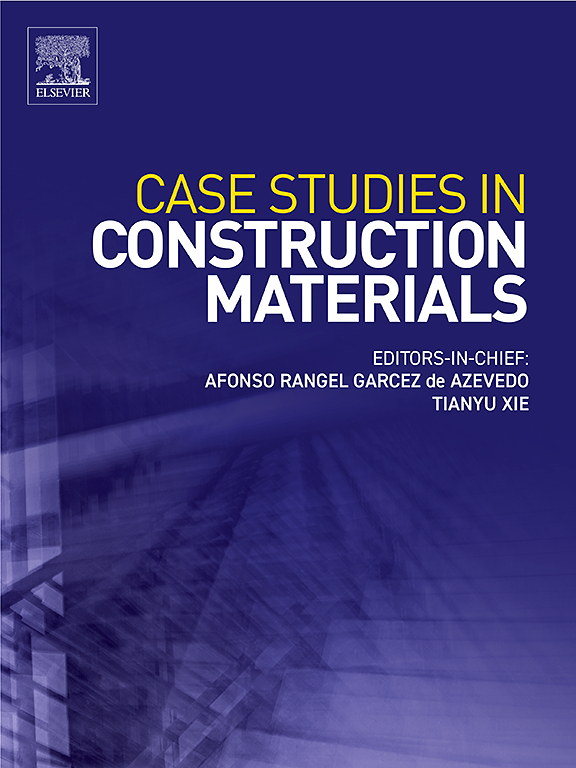Effects of fly ash content on the macro-performance and microstructure of self-compacting concrete using tuff powder under freeze-thaw cycles
IF 6.6
2区 工程技术
Q1 CONSTRUCTION & BUILDING TECHNOLOGY
引用次数: 0
Abstract
Fly ash (FA) and tuff powder (TP) were incorporated to improve the macro-performance and microstructure of self-compacting concrete (SCC) under freeze-thaw cycles (FTCs). Three SCC mixtures with FA replacement levels of 0 %, 10 %, and 20 %, along with 15 % TP, were tested for rheological properties (slump flow and V-funnel), mechanical performance (compressive and splitting tensile strength), freeze-thaw resistance, and microstructural characteristics. Freeze-thaw resistance was evaluated using mass loss rate, relative dynamic elastic modulus (RDEM), and relative compressive strength. The results indicate that FA improves the SCC flowability but reduces segregation resistance. While FA decreases compressive and splitting tensile strengths, it enhances compressive strength development over time. Additionally, FA lowers mass loss rates, mitigates RDEM deterioration, and increases relative compressive strength during FTC exposure. Microstructural analysis reveals that FA decreases overall porosity and significantly reduces the volume of harmful and multi-harmful pores. A decline in harmful and multi-harmful pores corresponds with lower mass loss rates and higher RDEM values. Finally, damage models based on mass loss and dynamic elastic modulus are developed to predict SCC service life under FTC conditions, providing a valuable reference for SCC production in the Xizang Autonomous Region.
冻融循环下粉煤灰掺量对凝灰岩粉自密实混凝土宏观性能和微观结构的影响
掺入粉煤灰(FA)和凝灰岩粉(TP)改善冻融循环下自密实混凝土(SCC)的宏观性能和微观结构。对三种FA替换水平分别为0 %、10 %和20 %以及15 % TP的SCC混合物进行了流变特性(坍落度流动和v型漏斗)、力学性能(抗压和劈裂拉伸强度)、抗冻融性和微观结构特性测试。冻融抗力通过质量损失率、相对动态弹性模量(RDEM)和相对抗压强度来评估。结果表明,FA提高了SCC的流动性,但降低了离析阻力。虽然FA降低了抗压和劈裂抗拉强度,但随着时间的推移,它提高了抗压强度的发展。此外,FA降低了质量损失率,减轻了RDEM的恶化,并增加了在FTC暴露期间的相对抗压强度。微观结构分析表明,FA降低了整体孔隙度,显著减少了有害孔隙和多有害孔隙的体积。有害孔隙和多有害孔隙的减少与质量损失率降低和RDEM值升高相对应。最后,建立了基于质量损失和动态弹性模量的损伤模型,预测了FTC条件下SCC的使用寿命,为西藏自治区SCC生产提供了有价值的参考。
本文章由计算机程序翻译,如有差异,请以英文原文为准。
求助全文
约1分钟内获得全文
求助全文
来源期刊

Case Studies in Construction Materials
Multiple-
CiteScore
7.60
自引率
19.40%
发文量
842
审稿时长
63 days
期刊介绍:
Case Studies in Construction Materials provides a forum for the rapid publication of short, structured Case Studies on construction materials. In addition, the journal also publishes related Short Communications, Full length research article and Comprehensive review papers (by invitation).
The journal will provide an essential compendium of case studies for practicing engineers, designers, researchers and other practitioners who are interested in all aspects construction materials. The journal will publish new and novel case studies, but will also provide a forum for the publication of high quality descriptions of classic construction material problems and solutions.
 求助内容:
求助内容: 应助结果提醒方式:
应助结果提醒方式:


